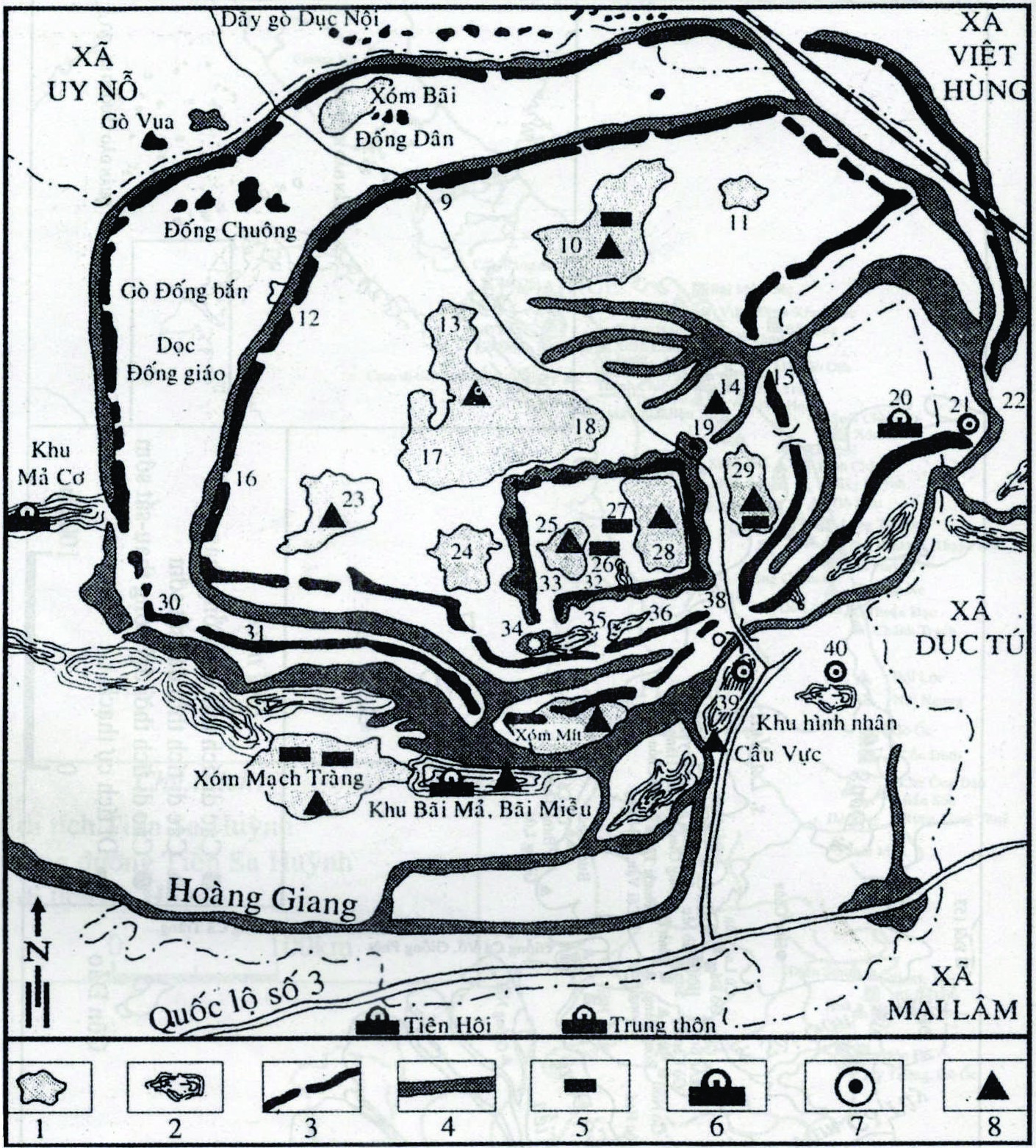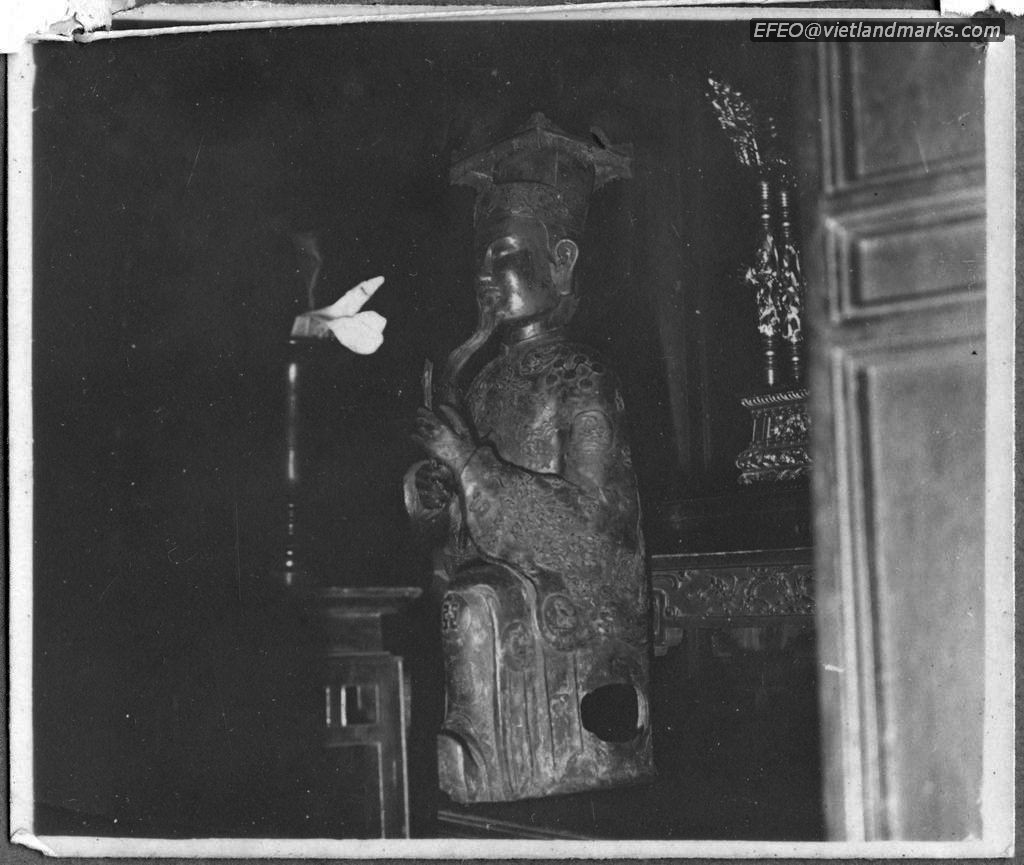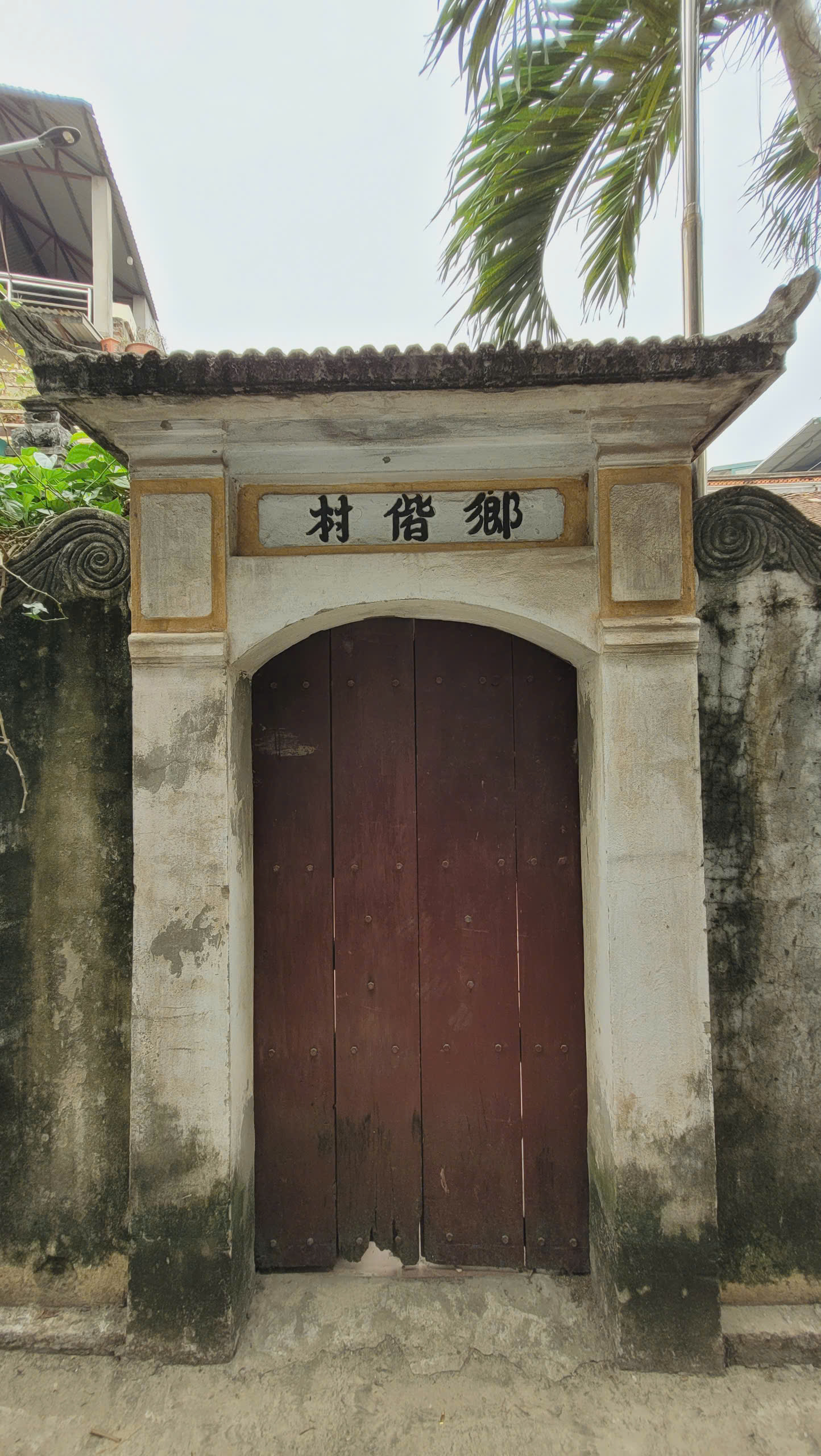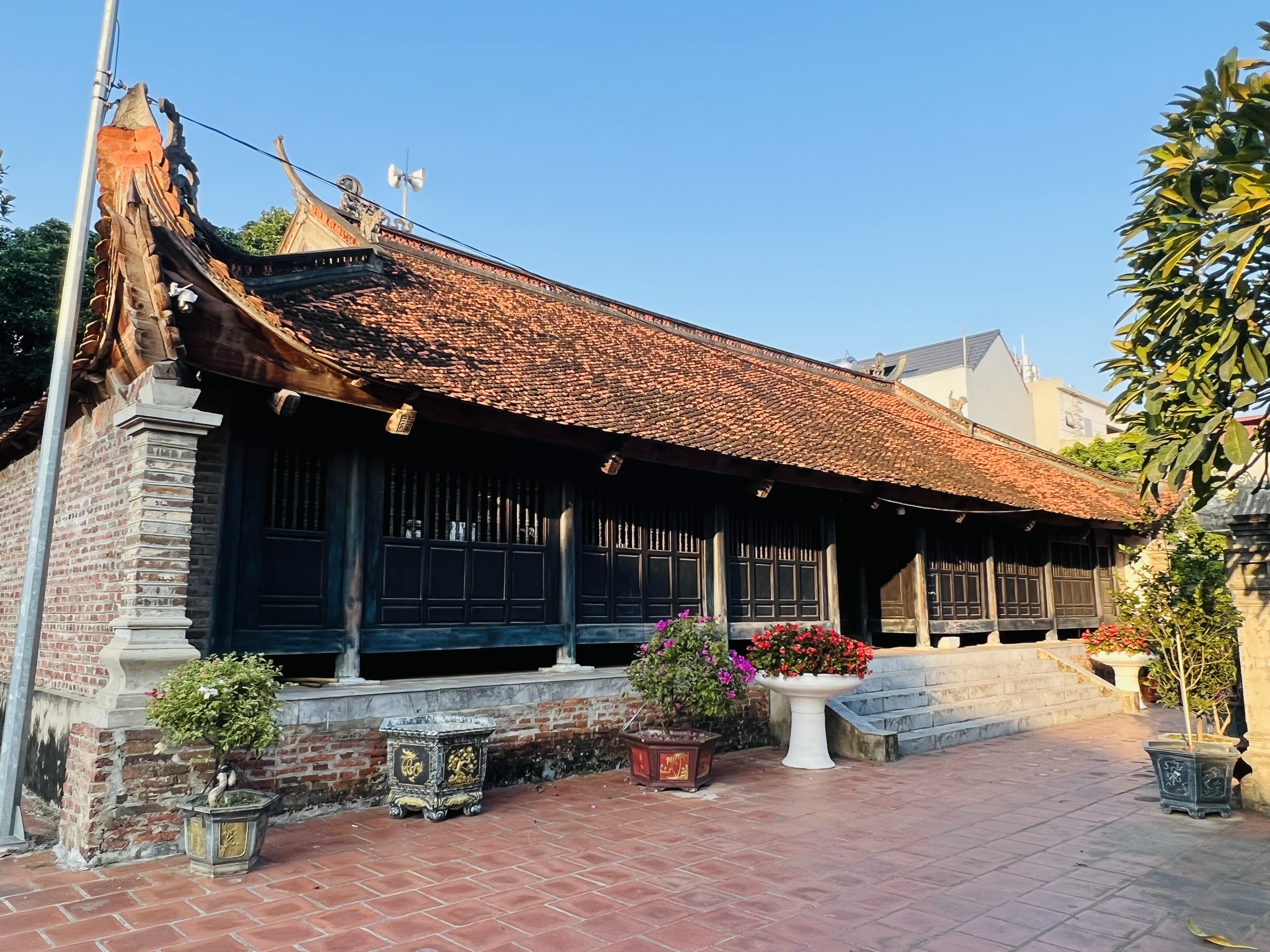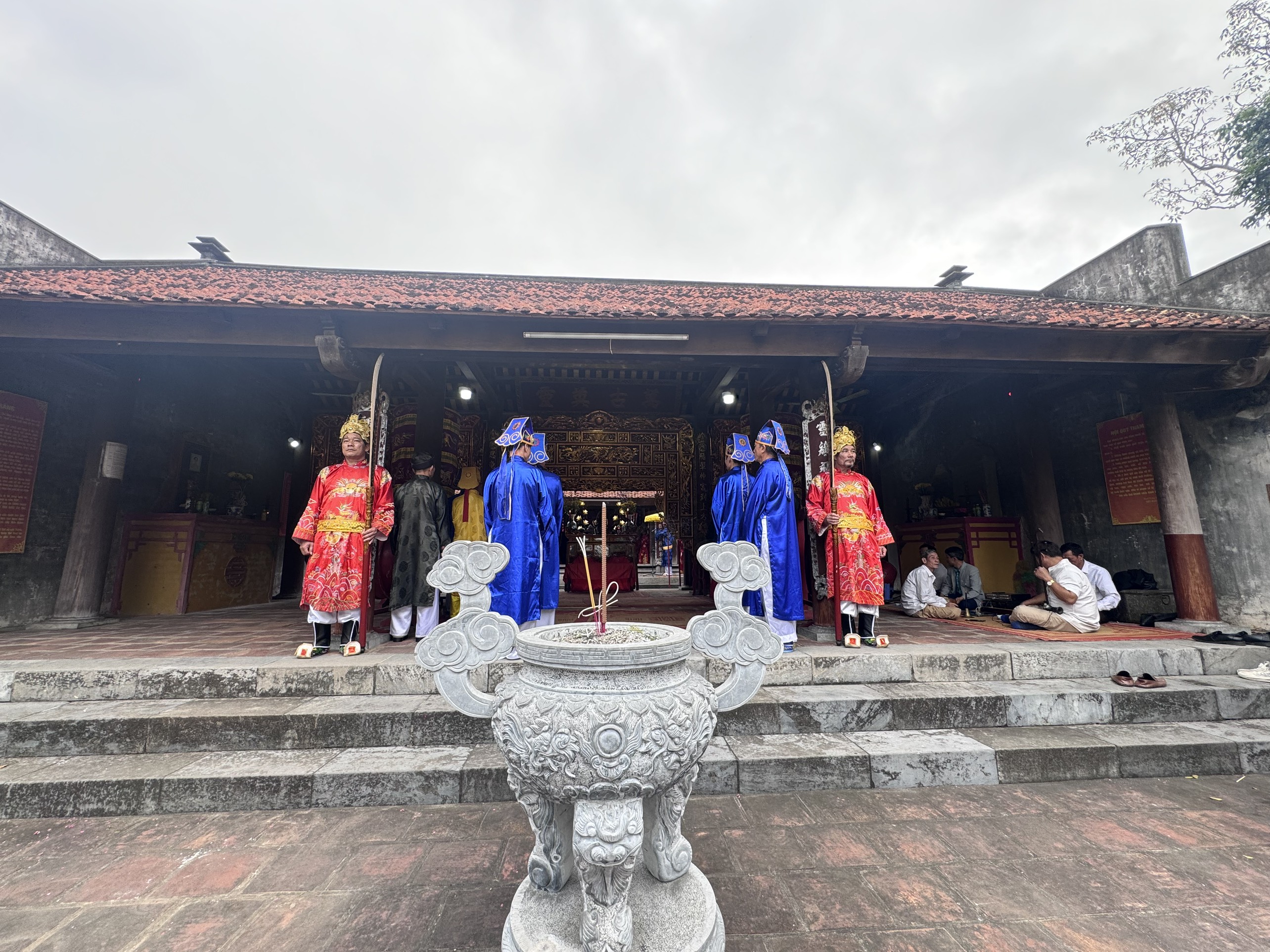
Mach Trang village was formerly Mach Trang commune, Xuan Canh commune, Dong Ngan district, Tu Son prefecture, Kinh Bac town (region) and was one of the "eight communes of the protection", now Mach Trang village belongs to Co Loa commune, Dong Anh district, Hanoi suburb. Mach Trang is a village located outside the three rings of Co Loa citadel. The north of the village borders the moat and the outer wall, the south borders the Hoang Giang river - the river that acts as a natural moat system of Co Loa citadel. In the past, the village had an independent and closed bamboo fence system. The border of Mach Trang village with the hamlets on the current map of Co Loa commune is as follows:
- To the North, it borders Ga hamlet and Lan Tri hamlet (belonging to Co Loa commune), separated by the central and outer citadels.
- To the South and Southwest, it borders Dong Hoi commune and Xuan Canh commune, separated by Hoang Giang river.
- To the Northwest, it borders Cau Ca village (Co Loa commune).
- To the East, it borders Mit hamlet (Co Loa commune).
The name Mach Trang is explained by folklore as: Mach refers to the barley plant that the village used to grow. Trang is a mispronunciation of the word Truong because this place used to be an examination school during the reign of King Thuc. Folklore tells that in the past, this was also one of the eight towns of the ancient capital of Co Loa, guarded by General Ngo Nam Tu.
In the past, the village had 4 hamlets: East, South, West, North; there were 4 hamlets: Chua, Ngoi, Giua, Tri. Each hamlet had 4 separate points. Each hamlet was headed by a hamlet chief, the hamlet head was headed by a hamlet chief. Every year, each hamlet had its own ceremony, in addition to sending money to the temple, the families also sent money to the hamlet and faction.
The communal land of the village was divided equally among the hamlets, then the hamlets divided equally among the men in the hamlets, so the land shares of the village members belonging to different hamlets were not equal. The land of the hamlets was located in alternating fields: "East to Dong, North to Doai".
The division of the hamlets is based on the status of "sticky rice and beans", alternating between members of the hamlets. Due to the uneven population, there is a phenomenon that in hamlets with many members, the eldest son stays with the father's hamlet, while the second son stays with the mother's hamlet. Later, the person born in which hamlet is that hamlet.
The main clans in the village today: Nguyen, Dao, Dang, Cao, Tran, Bui, Ngo, Hoang, Duong... with the ancestral temples of some clans such as Nguyen clan (Nguyen clan temple), Dang clan temple, Dang clan's second branch temple.
Cultural, religious and belief architectural works in the village are: Mach Trang communal house, Mach Trang temple (Tran Linh Tu), Mach Trang pagoda (Linh Quang Tu).
Mach Trang Communal House worships King An Duong Vuong. The communal house faces southwest, located southwest of the village, next to the field leading to Cau Ca hamlet. The old communal house was destroyed during the war. Recently, the communal house received state funding, so it was rebuilt on the old land on a larger scale.
Mach Trang Temple worships Princess My Chau. The temple is located in front, to the right of the main communal house and parallel to the front house, facing southwest. The new temple was rebuilt together with the communal house, consisting of three front rooms and one back room, inside of which hangs a new pair of parallel sentences.
Mach Trang Temple worships Princess My Chau. The temple is located in front, to the right of the main communal house and parallel to the front house, facing southwest. The new temple was rebuilt together with the communal house, consisting of three front rooms and one back room, inside of which hangs a new pair of parallel sentences.
After many moves, Mach Trang Pagoda is now located in the western area of the village, adjacent to the communal house to the east. The pagoda was built facing south. The entire complex of relics in the pagoda grounds includes: 7 pagoda rooms + 3 Tam Bao rooms, inside there are a total of 62 large and small statues, 7 horizontal lacquered boards, 7 pairs of parallel sentences, 1 old bell. Behind the pagoda is the Ancestor's house and the Mother's temple, including 5 front rooms and 1 back room. The pagoda was recognized by the state as a historical and cultural relic in 1998.
The only remaining vestiges of the old relics in the village today are: Van Chi, Mach Trang communal house, Thang Nam bridge, Khuyen Nong bridge, and the village gate.
The village is located to the west of the village, outside the fields leading up to Cau Ca village.
Mach Trang Temple is also known as Ba Cha Temple, because this is the communal house of 3 villages: Mach Trang, Van Thuong, Ngoai Sat. In the past, on the 6th day of the first lunar month every year, after the 3 villages came to worship at Thuong Temple, they gathered here to perform the ceremony, then the 3 villages split up and went home. Ba Cha Temple used to consist of 3 rooms, 1 back palace, located next to the literary area. The temple and the literary area were both destroyed by the Japanese in 1943.
The May Bridge used to be a bamboo bridge across the May Pond (a section of the Hoang Giang River) in the southwest of Mach Trang village. The two villages of Van Thuong and Ngoai Sat had to cross this bridge to go to Co Loa for a ceremony. After the bridge was destroyed (I don't remember the exact year), people had to take a ferry across, called the May Ferry.
The old Khuyen Nong Bridge in the west of the village and the Mieu Bridge in the east both had three tiled roofs, and were resting places for people going to the fields.
In the past, the village had four gates, all built of bricks. The east gate was called Chua gate (because there used to be a pagoda here), the west gate was called Dinh gate, the south gate was Dong gate, the north gate was Sau gate, later all four gates were destroyed.
MANAGEMENT DEPARTMENT OF CỔ LOA VESTIGE SITE
